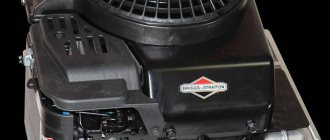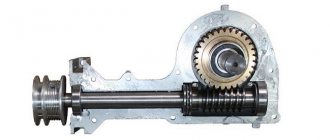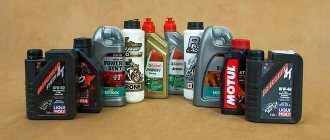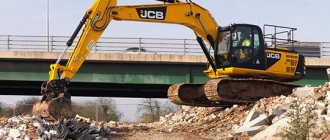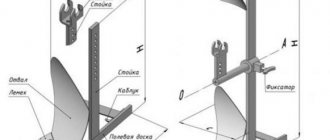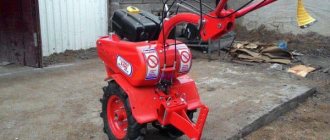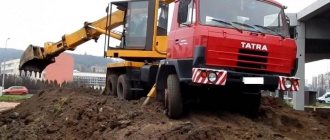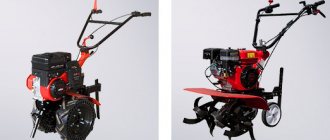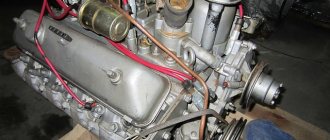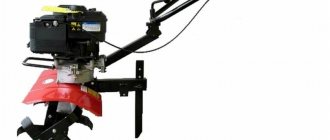Seeing self-propelled equipment in a village or private sector that looks like the front part of a tractor is no longer a curiosity. The traction mechanism helps the farmer in cultivating the land, growing vegetables, making hay and moving goods. The Tarpan motor cultivator copes well with basic agricultural work on the site. Gardeners who are not familiar with the equipment, but are thinking about buying it, will benefit from reviews from users and owners describing the advantages and disadvantages, an overview of the model range, technical characteristics of the devices and their price.
Peculiarities
Small agricultural machinery is assembled at the large Russian enterprise Tulamashzavod (TMZ). This holding includes more than 20 manufacturing companies producing products for civil and military purposes. Direct assembly takes place at the Tulamash-Tarpan subsidiary, which produces small agricultural equipment.
Light Tarpan cultivators are equipped with gasoline engines of American, Japanese, and Russian production. They all have approximately similar characteristics and layout. However, the power of the Briggs & Stratton Quantum engine, produced in the USA, is slightly larger than the others - 6 hp. With. Features of the device:
- Long life worm gearbox. Precision manufacturing of parts, quality of assembly and selected materials ensured the high reliability of the unit.
- Adjustable plowing depth. Depending on the position of the support lever, the processing amount can be set in the range from 16 to 25 cm.
- Adjustable cultivation width. The required size is obtained by installing a certain number of cutters.
- Modular design. Disassembling the unit into large units allows it to be transported in the trunk of a car.
Description of design
The device is based on a gasoline engine. Depending on the model of the latter, the engine power ranges from 4 to 6 liters. With. More torque is developed by the power unit of the American manufacturer. In this modification, a petrol cultivator can be used to cultivate virgin lands. The cultivator does not have a load-bearing frame welded from metal profiles. All auxiliary components and controls are mounted directly to the engine housing. The use of this design made it possible to reduce the overall weight of the device, which facilitates its delivery to the work site.
For your information!
Virgin soil is processed in several passes. The first will necessarily be cutting the layers of earth with a plow, then cultivating with rototillers.
Lightweight Tarpan motor cultivators consist of two parts (power unit, actuator) that can be separated and then quickly assembled. They are fastened together with hinged bolts. The power unit consists of an engine, a docking unit, a clutch, and a steering control. The main component of the executive unit is a worm gearbox. On the body of the latter there are bosses for fastening the articulation unit with attachments.
Advantages of motor cultivators
The common advantages of all Tarpan models are:
- Folding design. The cultivator can be folded into two parts, which is very convenient for transportation.
- The combination of a technologically advanced engine with reliable attachments makes this technique suitable for even the most difficult soil.
- High processing speed. Even the simplest models are capable of processing up to 10 acres in 5 hours.
- Ease of control. There is no software, all functions are configured manually, so there are fewer glitches.
- The presence of a worm gearbox, which “runs” many times longer than chains and belts.
- The engine is located vertically, making it easy to remove for maintenance.
- Sharpening cutters. They do not become dull even after walking through virgin soil.
- Possibility of additional use of a wide range of attachments.
Advantages and disadvantages
Under the Tarpan brand, the cultivator has been produced for more than 25 years. However, the first models that came off the assembly line were not very reliable. Users constantly contacted service centers for warranty repairs and planned to abandon production. But updating the material and technical base of the plant and improving assembly technology made it possible to launch the production of high-quality equipment for cultivating land. Among the advantages are:
- Modular design. The device is easy to disassemble, transport, and maintain.
- Possibility of installing the power unit on auxiliary equipment (mowers, seeders, snow blowers).
- Centrifugal clutch. Automatic activation of the drive when the engine reaches high speeds allows the device to operate smoothly, without jerking, which reduces the dynamic load on the operator.
In addition to the positive aspects of the lightweight and simplified design, the device has a number of negative ones. Disadvantages of cultivators:
- Lack of a full transmission. Agricultural implements have only one forward speed. The inability to move backwards self-propelled greatly complicates work in small areas and densely planted beds.
- The vertical position of the engine makes changing the oil more difficult. If the device is used intensively, the procedure must be performed several times a season, and for this it is necessary to dismantle the clutch.
- The design of the cutters helps to wrap plant stems and their roots around them.
Model range, characteristics
The family of main models of motor cultivators is based on the basic design of “TMZ-MK-03”. They have a similar layout, but different power units. The main parameters of the cultivators are given below.
Table. Technical characteristics of "TMZ-MK-03"
| Name | Meaning |
| Engine, power, l. With. | Kohler (XT775) 5.5; Briggs & Stratton (675EXi) 6; "Tarpan" (173) 5 |
| Hourly fuel consumption, l | 1,1 |
| Weight, kg | 45 |
| Productivity, ha/hour | 0,06 |
| Diameter of cutters, mm | 320 |
| Operating temperature range, °C | 5-40 |
| Number of gears (forward/reverse) | 1/- |
| price, rub. | 22500 — 25000 |
For your information!
Tarpan walk-behind tractors with a Briggs 675EXi engine were produced in early modifications of agricultural machinery. In later models they were replaced with Japanese counterparts.
The plant, in addition to simple devices, also produces a separate line of equipment - “TMZ-MK-03-02”. The difference from the main series is the horizontal placement of the power unit and a variable gearbox that allows you to move forward and backward. This arrangement greatly facilitated the cultivation of land in limited areas.
Table. Technical parameters of “TMZ-MK-03-02”
| Name | Meaning |
| Engine, power, l. With. | Briggs & Stratton (RS950) 6.5 |
| Hourly fuel consumption, l | 1,1 |
| Weight, kg | 55 |
| Productivity, ha/hour | 0,06 |
| Diameter of cutters, mm | 320 |
| Operating temperature range, °C | 5 – 40 |
| Number of gears (forward/reverse) | 1/1 |
| price, rub. | 25750 |
Possible faults
Cultivators from the Tula manufacturer are unpretentious in maintenance and, with annual maintenance, work perfectly for 6-7 years. However, they can also be damaged:
- The engine won't start. The reason for this may be incorrect engine speed settings. The problem can be resolved by replacing the spark plug and tuning the engine according to the instructions.
- High oil consumption. The reason is that fuel does not enter the carburetor. In case of this breakdown, it is necessary to check the amount of fuel in the tank or replace faulty hoses.
- Motor overheating. The reason is a malfunction of the cooling system or a clogged air filter.
To ensure smooth operation of the equipment, it is necessary to carry out a full maintenance of the machine before each season:
- change the oil in the gearbox;
- check for oil and fuel leaks in the system;
- lubricate the traction and control elements.
Daily Maintenance:
- checking the main fasteners and bolts;
- cleaning cutters from soil and plant roots;
- checking clutch operation.
Optional equipment
To expand the capabilities and functionality of the cultivator, gardeners use additional sets of attachments. The latter are needed for cultivating the land, when hilling, planting or digging up potatoes, and mowing lawns. Branded attachments for the Tarpan cultivator are sold at official representative offices of the manufacturer. In addition, the universal coupling device allows you to pair the device with similar tools made for similar equipment.
Rotary cutter
A tillage tool designed for loosening and cultivating soil. The cutter is also used when mixing mineral fertilizers with soil on agricultural land and in vegetable growing to saturate it with micronutrients. The manufacturer supplies 4 cutters complete with the motor cultivator. They are installed in pairs on the output shaft of the worm gearbox. This arrangement allows you to process a strip of land 65 cm wide. In addition, the design of the device provides for mounting 2 more cutters (one on each side). In this case, the processing width reaches 1 m.
Plow
An important element in agrotechnical work is plowing virgin lands. It is not possible to treat them with rototillers. Rotating blades quickly become clogged with plant debris and clods of dirt. In addition, due to the low weight of the device, it will not be possible to go deeper into the ground, and the operator has to run after the cultivator. The plow, on the contrary, cuts the layer of earth and turns it over. This treatment allows you to properly prepare land for future crops, plow compacted soil and apply fertilizers.
For your information!
Gardeners prefer to use a collapsible plow. The combined arrangement allows you to make the cutting part from a more durable metal and change it as it wears.
Mowers and rakes
The design of the cultivator itself does not imply the installation of devices for mowing grass. Mowers from third-party manufacturers provide that the device has a power take-off shaft. However, the light Tarpan has nothing like this. But the modular design allows the drive unit to be interfaced with other mechanisms. This is how the “Struna” rotary mower from a branded manufacturer works. According to the technical data, the tandem is capable of mowing both young grass on lawns and clearing the land from tall weeds. To collect hay, farmers use trailed rakes that are installed in the rear dock.
Potato digger and potato planter
It is difficult to imagine farming without potatoes. There will always be a place for this crop in the garden beds. To plant tubers over a large area, gardeners use potato planters. This mechanism simultaneously performs a number of operations: it forms a furrow, evenly arranges the tubers in the recesses and buries the groove. The distribution mechanism, which periodically supplies planting material, is driven by a pair of wheels.
Fuel consumption
Tarpan cultivators operate on any gasoline. The quality of the fuel does not affect the functionality of the unit. Farmers take into account the sufficient “gluttony” of the cultivator and give preference to the budget AI-92.
On average, the engine consumes up to 1.5 liters of gasoline per hour. Considering that it takes up to 5-6 hours to process 10 acres, the entire land cultivation cycle will require about 9 liters of fuel. The more complex the soil, the more demanding the motor is, so consumption can increase to 1.8 l/h. If the cultivator is used for mowing grass or removing snow, it requires 2 liters of gasoline per hour of operation. In winter, fuel is also spent on heating the engine.
An important condition when working with this equipment is timely maintenance of the fuel system. Gasoline not drained for the winter or a cultivator with a full system left idle for a month is the reason for failure to start.
Manual
If a farmer uses self-propelled equipment for the first time to work on a plot of land, he needs to become familiar with the principles of operation of the device. In addition, it is worth studying the order of assembly of the main components and the rules of maintenance and operation. All necessary information is presented in the accompanying documentation for the product, supplied with it. In addition, if the paper copy is damaged, the operating instructions can be downloaded from the Internet, where it is publicly available. The attached documentation will definitely contain information on how to start the engine for the first time and break in the cultivator, how to maintain and repair it in the future.
Preparing for work
The cultivator you just purchased is in delivery condition. It is disassembled into its component parts, and the parts are preserved to prevent corrosion of metal surfaces. If the store did not assemble the device with a test run of the motor, this will have to be done by the operator at the place of operation of the agricultural machinery.
Depreservation
First of all, unpack all the units, placing them on a clean surface. Remove protective film or oiled paper from metal parts. Then the areas with grease applied to them are wiped with a clean, dry cloth. The spark plug is unscrewed from the cylinder head, washed in gasoline and dried. To remove preservative lubricant from the engine, turn the crankshaft several times using a manual starting device. In this case, the high-voltage spark plug wire must be pressed against ground so as not to damage the ignition coil.
Assembly
After removing the factory grease, proceed to final assembly. First of all, pneumatic wheels or rotary cutters are installed on the output shaft of the worm gearbox. The parts are secured using pins with cotter pins included in the delivery set. Then install the depth regulator into the coupling mechanism. When the drive unit is assembled, a motor with a clutch is attached to it. The units are fastened together with two hinged bolts.
For your information!
Cultivator cutters are installed on the drive output shaft so that the tips of the knives are directed in the direction of forward movement. It should be taken into account that the left and right structures differ from each other.
The final stage of assembly is installing the steering wheel. It is attached to the boss made on the dry clutch housing with four bolts. By releasing the clamping nut, the position of the handles is adjusted, adjusting their height to the height of the operator. After assembly, connect the accelerator cable to the carburetor throttle valve and switch the ignition switch. Before first use, check that all bolted connections are tightened and that there are no leaks of working fluids.
Preparing the engine for operation
The engine is cleaned of factory grease, and surfaces that heat up during operation are wiped dry. The accumulation of flammable substances on them leads to the formation of smoke in the first minutes after start-up. 600 ml of oil specified in the engine operating manual is poured through the filler neck. The liquid level is adjusted according to the marks on a special rod attached to the plug. Gradually pour in oil to ensure that the spot on the dipstick is located in the middle zone. Underfilling of lubricant or overfilling of the crankcase is not allowed.
User reviews
Alexey, 35 years old:
“I have been using the device for 4 years now. Compared to other analogues, it has an excess of horsepower. However, this does not affect the cost of the model in any way, and the garden can be processed much faster. It does its job with a bang, it consumes little gasoline and oil, I fill the American engine with regular 92. There is only one caveat - the fuel needs to be drained before long-term storage, otherwise it will stall in the spring. In the first year after winter, I was exhausted from starting the engine.”
Sergey, 58 years old:
“I bought it 3 years ago. It was assembled in the store, I only had to remove the steering wheel to make it fit in the trunk. Comfortable and functional. If you plow the prepared soil, it goes like clockwork. But when processing virgin soil, difficulties arise: the engine may stall. The walk-behind tractor itself constantly strives to break out of the ground, and holding it requires a lot of physical effort.”
Power reserves, high-quality materials and reliable assembly allow the Tarpan cultivator to be used for agricultural work. In addition, by purchasing some accessories, the user will greatly facilitate planting and caring for the beds, and will save time and effort when working in the garden.
About oil change
After the first five hours of operation, most customers change the oil. This information is easy to find in reviews. Otherwise, the motor may jam due to debris that ends up inside the motor. It is best to leave it hot while work is being done.
The waste is drained into a separate container when the engine has been warmed up to a suitable temperature. The equipment is left in one position until the liquid is completely drained. After that the plug is tightened and new oil is poured in.
The best option is compounds that are originally intended for four-stroke engines. High-quality materials reduce friction between individual parts. The engine life is increased and it receives protection against corrosion.
Don't forget about changing the oil
